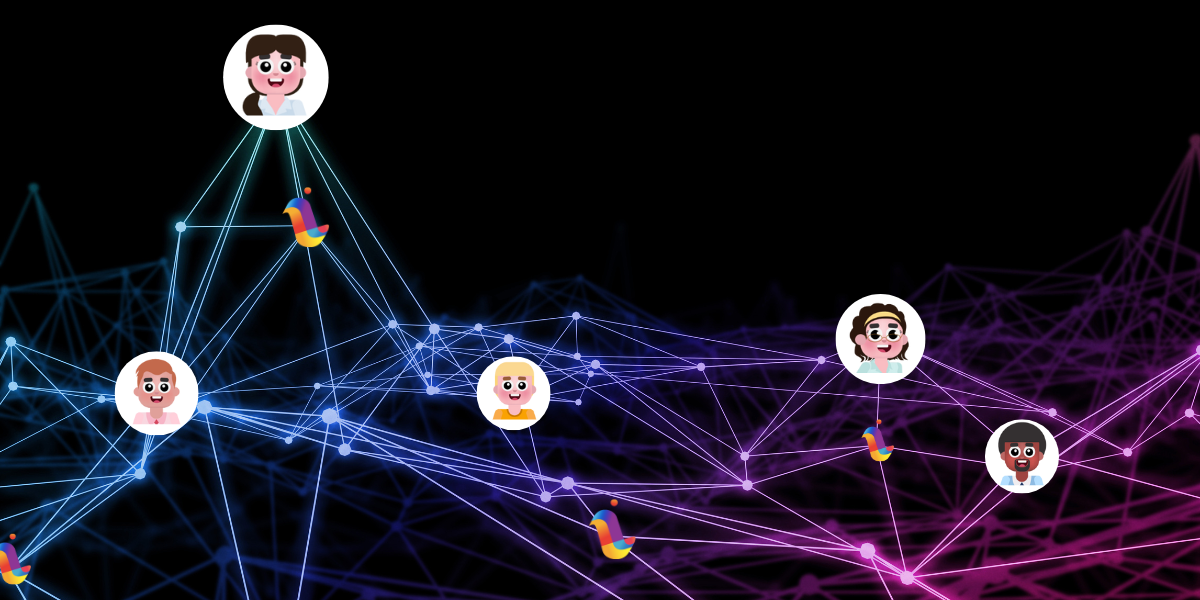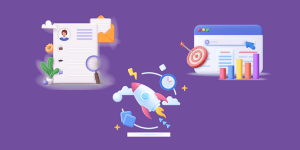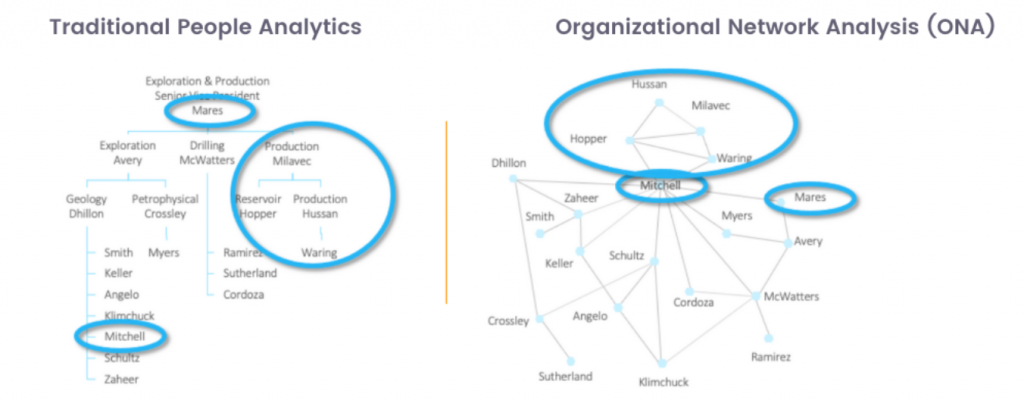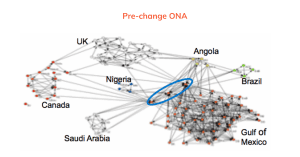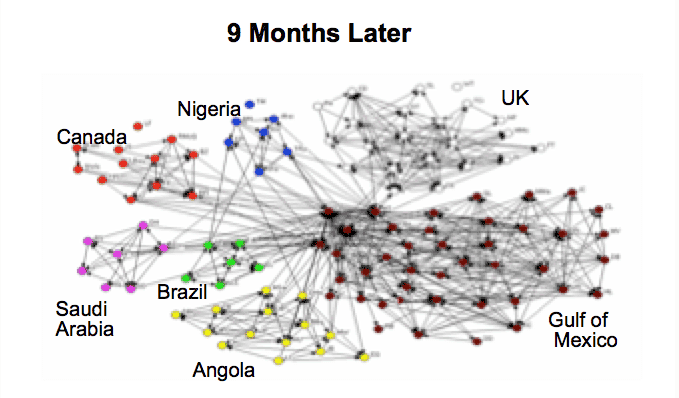Traditional people management models, characterized by a hierarchical structure, centralized decision-making, control-focused practices, minimal employee involvement, and infrequent use of metrics and data, are rapidly becoming outdated. In the fast-paced, continuously evolving business landscape of today, such methods can potentially curb flexibility, stifle innovation, and more crucially, diminish employee engagement, which is key to overall productivity and company culture.
Fortunately, the advent of new technologies has provided businesses with the means to navigate around the issues inherent in traditional people management strategies. The forthcoming sections delve into an innovative strategy known as ‘people analytics’, and a pioneering remote collaboration tool that integrates this feature. Together, they help to elevate your management strategies, not only by enhancing decision-making and innovation but also by actively fostering employee engagement. This ensures a more dynamic, responsive, and inclusive workplace environment that is attuned to the demands of the contemporary business world.
What is People Analytics and why should I care?
People analytics is the use of data, statistical analysis, and technology to gain insights into workforce-related issues, such as employee engagement, productivity, and retention. The goal of people analytics is to use data to inform and support decision-making related to human capital, with the ultimate aim of improving organizational performance.
There are a few reasons why people analytics has become increasingly essential to the modern workforce:
• Data-Driven Decisions: People analytics provides a data-driven approach to decision-making, which can lead to more accurate and objective decisions, rather than relying on intuition or gut feelings.
• Identify Patterns: People analytics allows organizations to identify patterns and trends in employee behavior, performance, and engagement, which can help organizations understand their workforce better.
• Improve Employee Experience: By understanding what drives employee engagement, satisfaction, and retention, people analytics can help organizations create a better employee experience, which leads to increased employee engagement and productivity.
• Cost savings: By using data to identify and address issues that lead to employee turnover, organizations can save money on recruitment and training costs.
• Talent Management: People analytics can help organizations identify and develop high-potential employees, as well as identify and address issues that are preventing employees from reaching their full potential.
• Compliance: People analytics can help organizations identify and address potential compliance issues related to fair hiring, pay, and promotions.
So, what’s the relationship between Traditional HR Practices with People Analytics?
Traditional HR practices, such as 1:1 check-ins and 360 reviews, have always been instrumental in understanding employee sentiments, performance, and areas of improvement. These methods provide qualitative feedback and foster open communication. Integrating these practices with people analytics takes this a step further. By quantifying the feedback from 1:1 sessions and 360 reviews, and combining it with other data sources, organizations can derive deeper, multifaceted insights. For instance, patterns from feedback can be cross-referenced with performance metrics, enabling a more holistic view of an employee’s growth trajectory or potential areas of concern. This synergy ensures that organizations don’t just understand their employees from a numbers standpoint but also respect the nuances and subjective experiences that traditional methods offer, resulting in a comprehensive view of the workforce. Combining these practices showcases the evolution of HR — merging the humane, personal touch with data-driven precision.
Overall, people analytics is essential to the modern workforce as it provides organizations with the ability to make data-driven decisions, understand and improve employee experience, save costs and improve talent management while ensuring compliance.
What type of people analytics does LEAD offer and why it is important?
LEAD offers Organizational network analysis (ONA) to eligible customers. Organizational network analysis (ONA) and organizational chart-based people analytics both provide valuable insights into an organization, but they approach the analysis from different perspectives.
Organizational charts provide a hierarchical view of an organization, showing the formal reporting relationships between employees. In contrast, ONA uses data on the interactions and relationships between employees to map the informal social networks within an organization.
Benefits of ONA compared to organizational chart-based people analytics include:
• ONA can reveal informal relationships and communication patterns that are not captured by formal reporting structures.
• ONA can provide a more accurate picture of how information and decision-making flow within an organization, allowing leaders to identify potential bottlenecks or issues with collaboration.
• ONA can help identify key influencers within an organization, and provide insights into the formation of informal leadership.eg.
-
-
- For Sales Team: Recognizing and collaborating with internal influencers can lead to refined sales pitches, as these individuals often possess insights into what resonates best within the organization and the market. Moreover, sales teams can tap into the networks of these influencers to identify potential leads and opportunities they might otherwise overlook.
- For Engineering Team: For engineering teams, understanding the informal leadership structure can expedite problem-solving. By identifying those who are central nodes of communication and influence, challenges can be swiftly addressed, and collaboration streamlined. This can lead to faster iteration cycles and more efficient deployment of resources.
-
• ONA can also help identify potential internal risks such as lack of communication, quiet quitting employees, and help identify key people that may have the ability to change communication patterns.
• ONA can provide a more holistic view of an organization, as it takes into account both formal and informal relationships and interactions.
At LEAD, our people analytics team uses a combination of data to provide you with Organizational Network Analysis in an easily consumed way. Even for non-technical customers, we are able to provide a comprehensive view of how informal relationships and interactions within an organization can influence structure, communication, and decision-making.
How can the solutions LEAD.bot offers impact your organization?
Before <> After
LEAD.bot ,Harnessing the power of AI, LEAD.bot curates virtual coffee chats, Watercooler sessions, and Pulse Surveys to profoundly reshape your organizational network:
• Dynamic Network Visualization & Connectivity Insights: With LEAD’s AI-enhanced employee matching software, you can seamlessly monitor and understand shifts in your organizational network’s connectivity and connectedness. Our data visualization tools not only capture the evolving nature of your collaboration but also provide a clear ‘before and after’ snapshot. Such keen insights empower HR managers and executives to swiftly pinpoint and address network deficiencies while celebrating positive shifts. This holistic view of your organizational network equips you to make informed decisions that bolster employee engagement, wellbeing, and retention.
• Building Smarter, Stronger Connections: By leveraging AI, LEAD intelligently matches employees based on shared interests, skills, or roles. This not only forges deeper bonds but catalyzes enriched collaboration and communication throughout the organization.
• Breaking Down Silos: LEAD promotes cross-departmental collaboration by matching employees from different teams for virtual projects, helping to dismantle silos and create a more unified, integrated organizational network, ultimately elevating the levels of employee engagement.
• Identifying Key Influencers: By analyzing interactions and relationships developed through virtual coffee chats, water cooler sessions and ONA Pulse Surveys, LEAD aids in identifying key influencers within the organization. This facilitates a better understanding of the information flow and decision-making dynamics within the organization, all of which contribute to higher employee engagement.
• Enhancing Employee Engagement: LEAD provides employees with regular opportunities to connect with their colleagues, thus significantly boosting employee engagement and nurturing a sense of community within the organization.
• Revolutionizing Communication: Our AI-backed nudges promote timely and meaningful employee interactions, crafting a more transparent and efficient communication matrix, which culminates in a heightened engagement ambiance.
• Pulse Surveys and Risk Identification: The integration of Pulse Surveys helps gauge the pulse of the organization and identify potential internal risks such as communication gaps. It also aids in spotting key individuals who could influence and improve communication patterns, contributing to proactive risk management and the overall health of employee engagement.

If my company is interested in seeing our ONA results, what type of data do we need to provide to LEAD?
For effective Organizational Network Analysis (ONA) with LEAD, we’ll require data about your employees’ interactions:
- Communication Metadata: Think Slack or Microsoft Teams chat logs. We’re interested in the patterns, not the content.
- Collaboration Info: Data on shared projects and teamwork. This includes LEAD.bot interactions and participation.
- Internal Company Networks: Who influence whom? Who’s teamed up before? Just the connectivity patterns. This is included in our Pulse Survey product.
- Employee Basics: Age, job title, tenure – the usual HR stuff.
- Performance Metrics: Productivity rates, attendance, turnover data, etc. (not mandatory)
- Surveys: Any feedback or surveys on employee sentiments, job satisfaction, and team communication. Our Pulse Survey product covers this topic as well.
Once we have the necessary data, our ONA software gets to work, visualizing and dissecting the intricate web of your organizational network. Interested? Email support@lead.app to schedule a demo!
How Does LEAD.bot Ensure Privacy and Security in Organizational Network Analysis (ONA)?
At the heart of successful business operations lies trust – trust in people, processes, and the technologies we employ. When considering implementing Organizational Network Analysis (ONA) through tools like LEAD.bot, it’s natural to prioritize the security and privacy of employee data.
Firstly, it’s essential to clarify that while ONA requires certain types of data to provide actionable insights, the data’s depth and sensitivity are typically less intrusive than one might assume. LEAD.bot, for instance, only needs communication metadata, NOT the actual content of the messages. This approach ensures the essence of interactions is captured without delving into personal or confidential information.
Additionally, many organizations are already accustomed to using platforms like Workday or CultureAmp, which have access to comprehensive employee data. These platforms have set industry standards for data security and privacy, and their widespread acceptance indicates a level of comfort with such tools. In the same vein, LEAD.bot has been designed with stringent security measures that align with or even exceed those of well-known platforms.
It’s also worth noting that the value of ONA isn’t in individual data points but in the aggregate. The goal isn’t to zoom in on one employee’s interactions but to understand broader patterns and trends that shape the organizational dynamic. This perspective ensures that individual privacy remains intact while still drawing meaningful conclusions about the organization’s health.
Furthermore, LEAD.bot is committed to upholding the highest standards of data protection. We employ robust encryption methods, regular security audits, and strict access controls to ensure data is not only secure but also used ethically and responsibly.
In conclusion, while concerns about data privacy are entirely valid, tools like LEAD.bot prioritize protecting this data while delivering invaluable insights. It’s all about striking the right balance between harnessing the power of data and respecting the privacy and trust of every individual in the organization.
Learn more with our blog articles: Better People Analytics with Organizational Network Analysis

